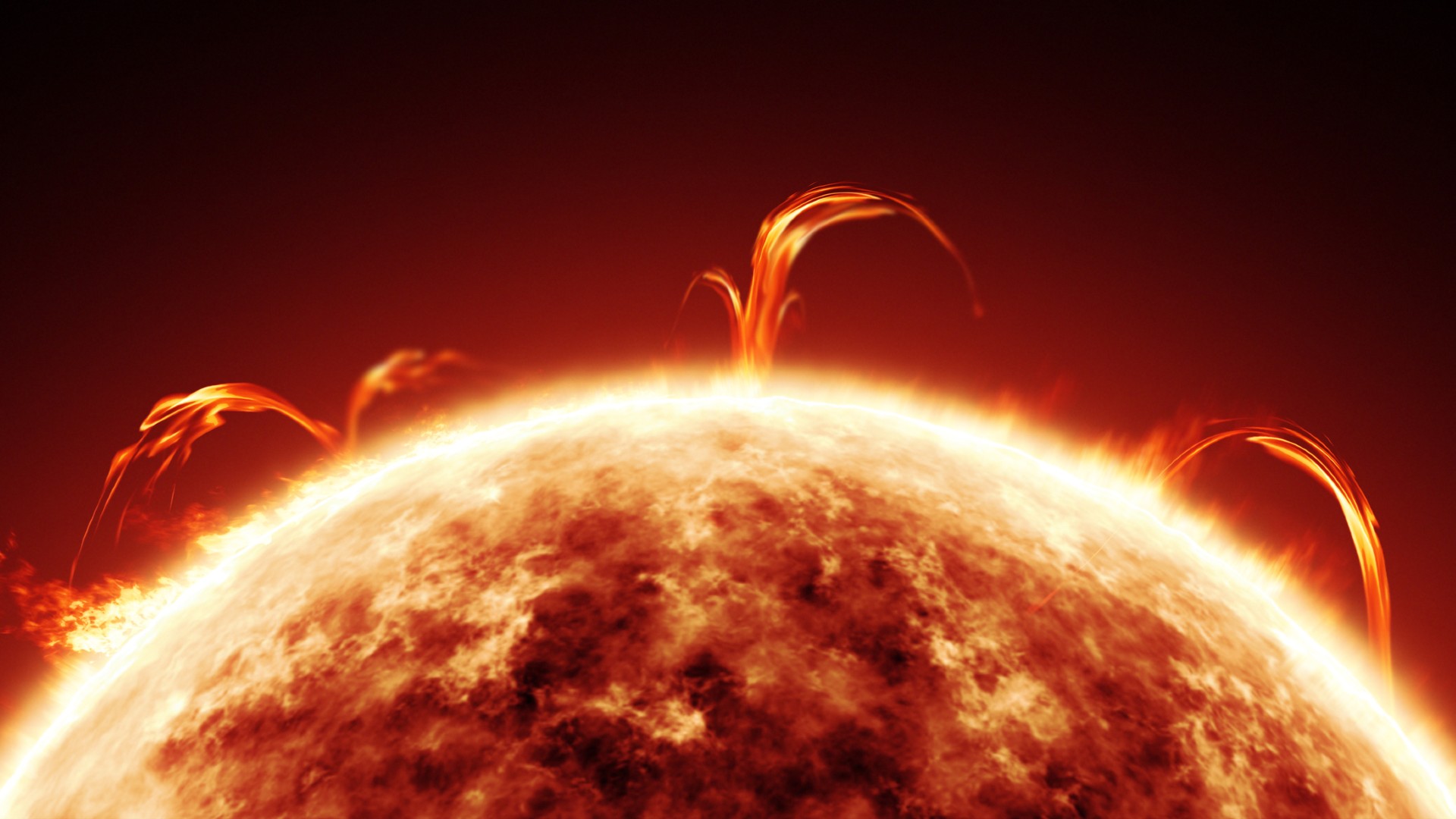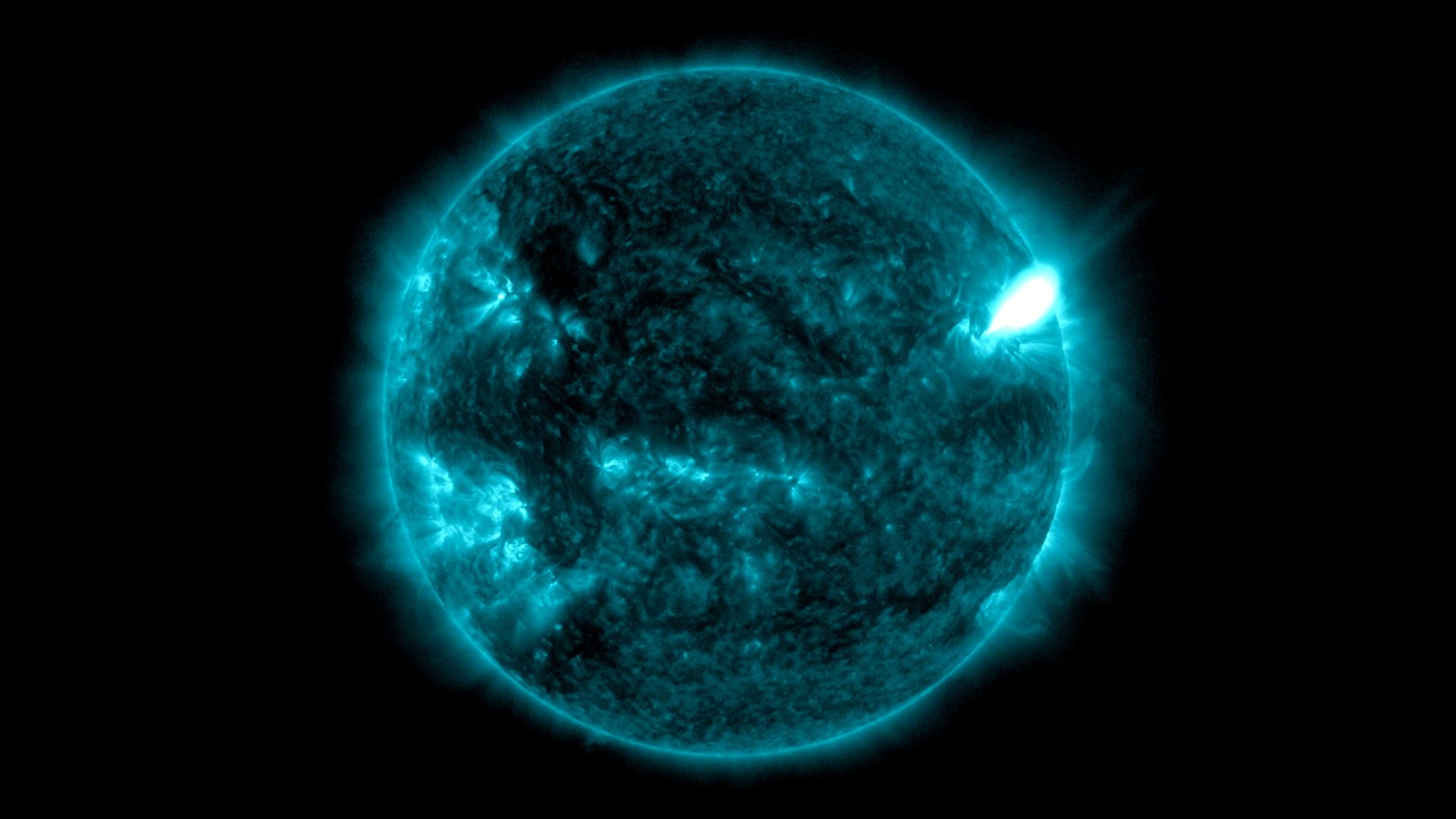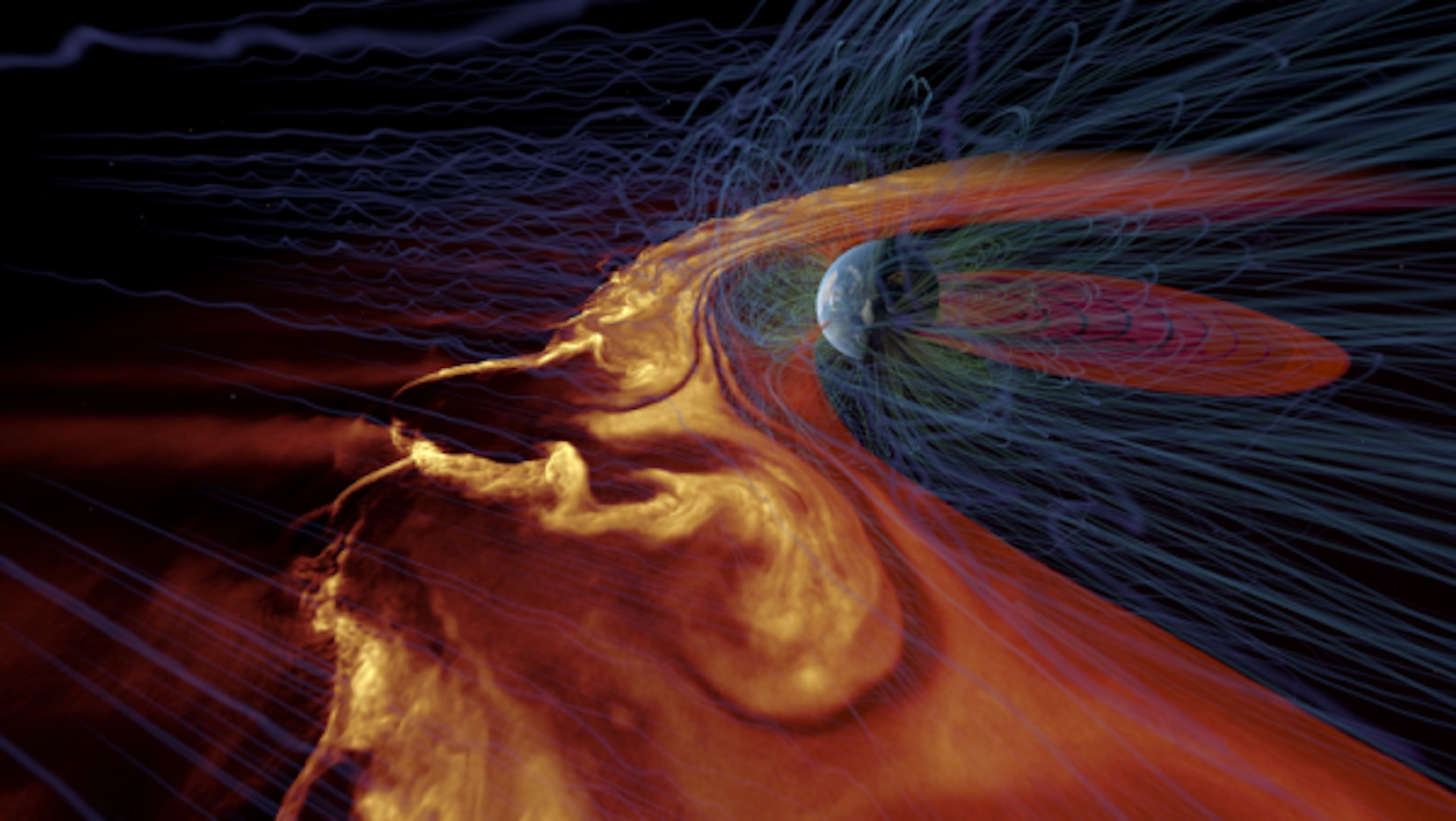Yes, solar storms are increasing, but don't lose sleep over an 'internet apocalypse.'
Non-existent NASA warnings about a months-long global internet shutdown triggered by a major solar storm in 2025 began circulating online recently.

Despite what many headlines have been saying, there's no internet apocalypse on the horizon.
Worries about such a months-long catastrophe began brewing on social media platforms not long after a 2021 study titled "Solar Superstorms: Planning for an Internet Apocalypse" suggested that a major solar storm could severely damage internet cables — specifically those under the sea that connect continents and help power the global internet. (The study was presented at a data communication conference in 2021 but has yet to appear in a peer-reviewed journal.)
Last week, misinformation that builds on fictitious warnings from NASA breathed new life into those "internet apocalypse" concerns, which are once again flourishing online. They include unfounded claims about an impending solar storm that will trigger global internet outage within the next decade, and how NASA's Parker Solar Probe, which was launched in 2018 to study the sun and its weather from up close, can save the internet "from death by solar storm."
Here are three debunked falsehoods that have gone viral on social media channels such as YouTube, TikTok, Twitter, Reddit and Instagram.
Related: Solar flares: What are they and how do they affect Earth?
NASA hasn't issued any warnings about an internet apocalypse
The current panic is fueled by a non-existent NASA alert about an imminent "internet apocalypse."
Most falsehoods refer to an article published by the space agency in March about its efforts to predict solar storms using artificial intelligence. In that article or elsewhere on its website, NASA has not used the expression "internet apocalypse." Instead, it stems from the same 2021 study, whose sole author, Sangeetha Abdu Jyothi, recently told The Washington Post that she regretted using the phrase and that her paper "just got too much attention."
Get the Space.com Newsletter
Breaking space news, the latest updates on rocket launches, skywatching events and more!
The online fears are also amplified by peer-reviewed research from earlier this year that showed the sun may arrive at the peak of its current activity in 2024, a year sooner than previously predicted. While scientists do, in fact, expect major solar storms to occur after solar activity reaches its peak, there is no evidence to support the viral rumors that the next major solar storm will cause the internet to go offline.
The effects of major solar storms on electric grids and communication systems are well documented, so it is "good to be wary and perform continuous monitoring and evaluation of the sun-Earth system and the heliospheric system," Vishal Upendran, who is a research associate at the Lockheed Martin Solar and Astrophysics Laboratory in California, told Space.com. However, "more studies are needed to make any strong statements regarding the strength of solar storms," he added.

Scientists haven't predicted a deadly solar storm in July 2025
Despite a myriad of claims about how the sun could kill the planet, there are no science-backed predictions that a deadly solar storm will occur in 2025.
Forecasting the severity of damage that solar storms could cause on Earth is complicated, according to Upendran. For example, as the sun nears its peak of magnetic activity, structures on its surface become increasingly complicated, making them difficult to incorporate into models.
Moreover, the solar flares shed by the sun are 3-D structures that interact with Earth's magnetic field system, which is also a 3-D structure, in ways that are not fully understood and thus tough to model.
"These are complex systems, and it would be improper to make a strong statement on the occurrence of any superstorms," Upendran told Space.com. He and his team have developed an artificial intelligence model that uses satellite data about solar wind to generate forecasts of solar storms up to 30 minutes before they happen. "The major strength of our model is that it can provide forecasts within seconds, and gives results every minute with a time horizon of 30 minutes," he said.

The team hopes their model will provide sufficient advance warning for satellite operators, power grid managers and telecommunication companies to take their systems offline temporarily or to move satellites to safer orbits to reduce damage, if possible.
Such predictions could be useful during the increased solar activity, which official predictions from the National Oceanic and Atmospheric Administration (NOAA) estimate will occur in July 2025. That's when the sun's magnetic activity that gives rise to sunspots and solar flares will reach its peak strength, but there are no official estimates of the damages solar storms might cause when that time comes.
The Parker Solar Probe is not a distraction for 'The Great Reset'
Misinformation has also been circulating that NASA is using its Parker Solar Probe mission to save the internet as a façade to support The Great Reset, which began as a global policy initiative by the World Economic Forum to help the economy recover from the COVID-19 pandemic but has since been woven into countless conspiracy theories.
"This means we are not able to connect with each other, we are not able to call each other, we are not able to go on the internet and way more," a person in a viral Facebook video said, according to a fact-checking service called PolitiFact.com. "But this also means that they can execute the Great Reset in silence without anyone knowing it."
The video was flagged by Facebook for fake news and has since been removed.
Join our Space Forums to keep talking space on the latest missions, night sky and more! And if you have a news tip, correction or comment, let us know at: community@space.com.

Sharmila Kuthunur is a Seattle-based science journalist focusing on astronomy and space exploration. Her work has also appeared in Scientific American, Astronomy and Live Science, among other publications. She has earned a master's degree in journalism from Northeastern University in Boston. Follow her on BlueSky @skuthunur.bsky.social
-
Unclear Engineer That article was far less comforting than it probably could have been - all it said was that nobody is actually predicting an "apocalypse" next year or the year after. It does not say that one could not happen then or even that it is unlikely to happen then. All it says is that it is hard to predict when such an event will happen.Reply
Giving some idea of the frequency/probability of a CME of sufficient magnitude to cause major damage, combined with the probability that that CME would come in Earth's direction, would help put the likelihood in perspective.
And, pointing out some factors that could help infrastructures survive the event would also be useful, both to a nervous public and to the managers of the infrastructure. One thing that comes to mind is that a lot of the high-tech cabling is fiberoptic material, not metallic wires that conduct electricity. Another would be to tell us if the Internet hubs have backup power for events that cause electrical grid disruptions. With all the "cold war" concerns about the effects of a large nuclear weapon being detonated in space above Kansas creating the same effects ("EMP"), I expect that there has been considerable thought about hardening vital infrastructure. -
bwana4swahili If the Earth experiences a Carrington Event, an internet apocalypse is not the only apocalypse we'd have to worry about!Reply









